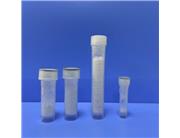The primary purpose of tesamorelin is to increase the serum levels of growth hormone (GH). The other potential benefits of the tesamorelin therapy just come organically with it.
As discussed earlier, one of the major symptoms of HIV and antiretroviral medication is lipodystrophy. It refers to either excessive build-up of fat in certain areas of the body, especially the abdominal region, or loss of normal body fat.
Clinical trials have shown a considerable reduction of visceral adipose tissue (VAT) in patients suffering from HIV-associated lipodystrophy.
Besides, tesamorelin also improved body composition measures by proving effective in reducing trunk fat, waist circumference, and waist-to-hip ratio.
Tesamorelin is also seen to reduce the size of carotid-intima media size (cIMT). Hence, it reduces the progression of carotid atherosclerotic vascular disease.
These prospective benefits might help establish a link between tesamorelin therapy and reduced risk of developing cardiovascular diseases.
Patients with lipodystrophy have lower serum levels of Insulin-like growth factor 1 (IGF-1). Tesamorelin administration triggers the production (IGF-1) from the hepatocytes. IGF-7, without altering blood glucose levels, carries out the process of growth and inhibits the programmed cell death mechanism.
Tesamorelin reduces the levels of cholesterol and triglycerides by carrying out the process of lipolysis. Hence, lipid profiles improved in the people who were administered tesamorelin.
Additionally, tesamorelin was also seen to enhance the cognitive capacities of individuals over the age of 60, thereby delaying the decline in brain functioning. This is achieved as tesamorelin lowers the level of myo-inositol (MI), an osmolyte that triggers the early onset of Alzheimer’s disease.

 China
China


